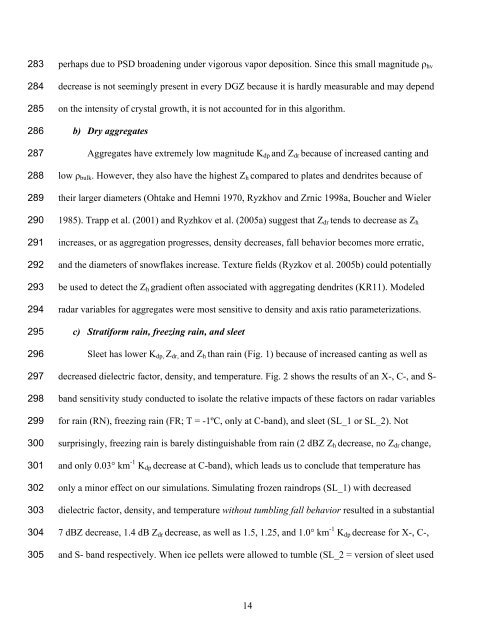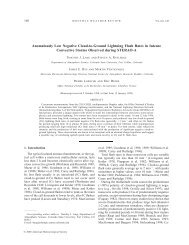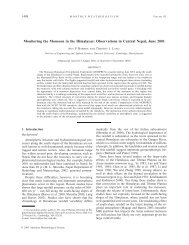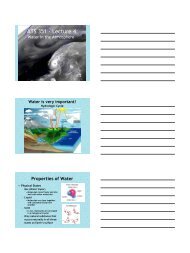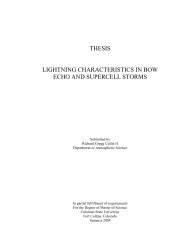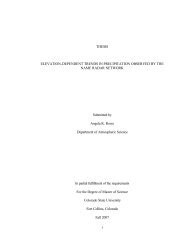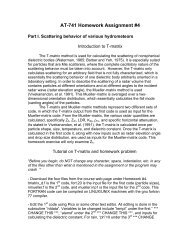1 A dual-polarization radar hydrometeor classification algorithm for ...
1 A dual-polarization radar hydrometeor classification algorithm for ...
1 A dual-polarization radar hydrometeor classification algorithm for ...
Create successful ePaper yourself
Turn your PDF publications into a flip-book with our unique Google optimized e-Paper software.
283284285286287288289290291292293294295296297298299300301302303304305perhaps due to PSD broadening under vigorous vapor deposition. Since this small magnitude ! hvdecrease is not seemingly present in every DGZ because it is hardly measurable and may dependon the intensity of crystal growth, it is not accounted <strong>for</strong> in this <strong>algorithm</strong>.b) Dry aggregatesAggregates have extremely low magnitude K dp and Z dr because of increased canting andlow ! bulk . However, they also have the highest Z h compared to plates and dendrites because oftheir larger diameters (Ohtake and Hemni 1970, Ryzkhov and Zrnic 1998a, Boucher and Wieler1985). Trapp et al. (2001) and Ryzhkov et al. (2005a) suggest that Z dr tends to decrease as Z hincreases, or as aggregation progresses, density decreases, fall behavior becomes more erratic,and the diameters of snowflakes increase. Texture fields (Ryzkov et al. 2005b) could potentiallybe used to detect the Z h gradient often associated with aggregating dendrites (KR11). Modeled<strong>radar</strong> variables <strong>for</strong> aggregates were most sensitive to density and axis ratio parameterizations.c) Strati<strong>for</strong>m rain, freezing rain, and sleetSleet has lower K dp, Z dr, and Z h than rain (Fig. 1) because of increased canting as well asdecreased dielectric factor, density, and temperature. Fig. 2 shows the results of an X-, C-, and S-band sensitivity study conducted to isolate the relative impacts of these factors on <strong>radar</strong> variables<strong>for</strong> rain (RN), freezing rain (FR; T = -1ºC, only at C-band), and sleet (SL_1 or SL_2). Notsurprisingly, freezing rain is barely distinguishable from rain (2 dBZ Z h decrease, no Z dr change,and only 0.03° km -1 K dp decrease at C-band), which leads us to conclude that temperature hasonly a minor effect on our simulations. Simulating frozen raindrops (SL_1) with decreaseddielectric factor, density, and temperature without tumbling fall behavior resulted in a substantial7 dBZ decrease, 1.4 dB Z dr decrease, as well as 1.5, 1.25, and 1.0° km -1 K dp decrease <strong>for</strong> X-, C-,and S- band respectively. When ice pellets were allowed to tumble (SL_2 = version of sleet used14


